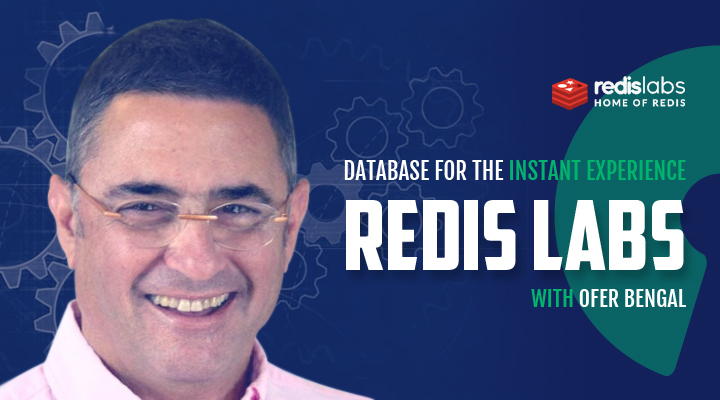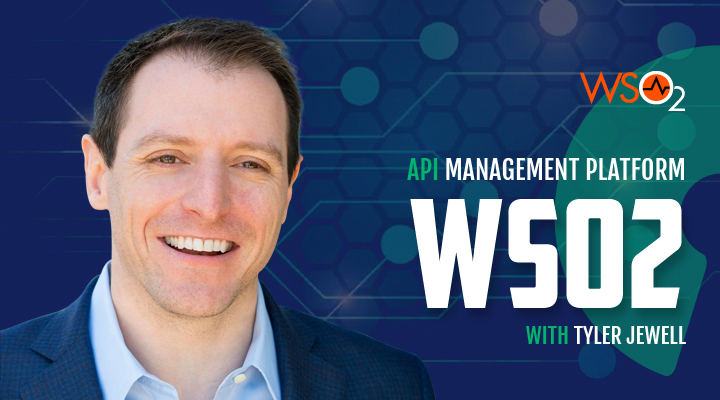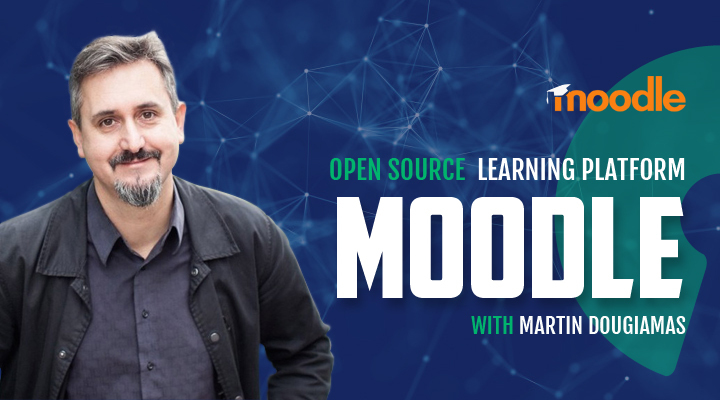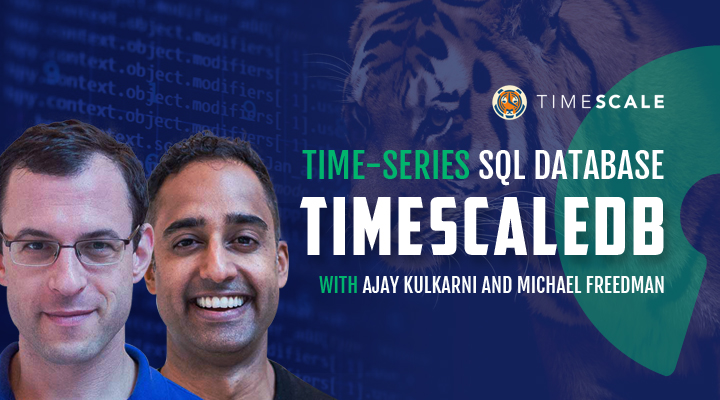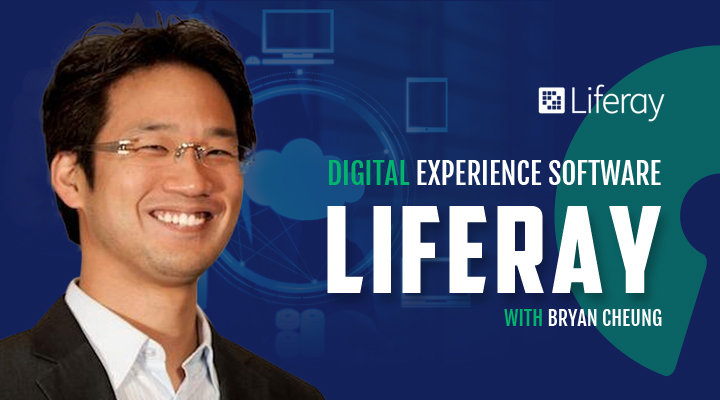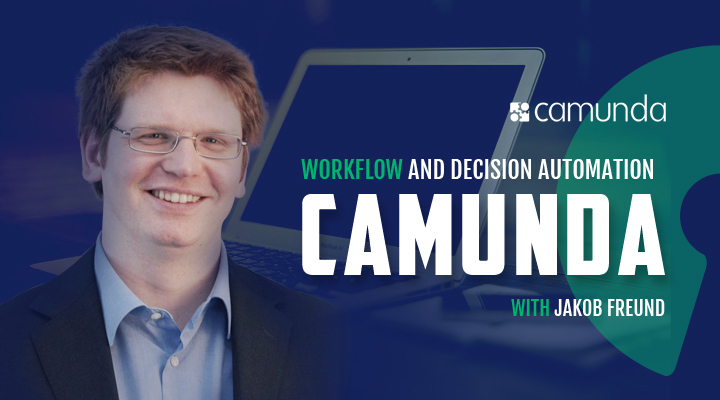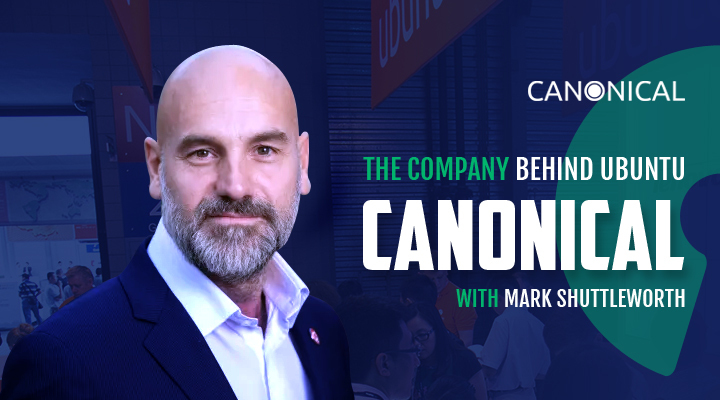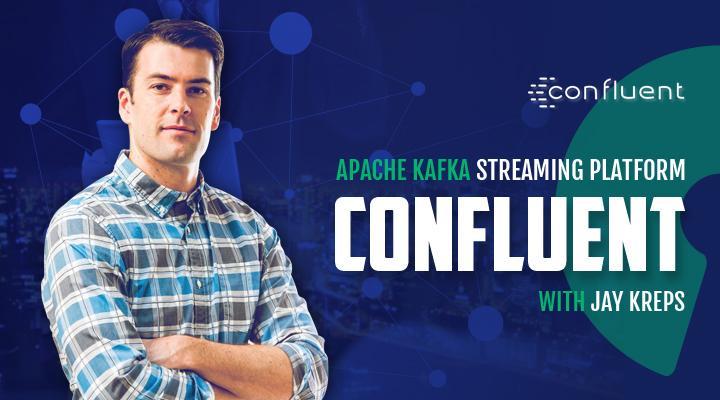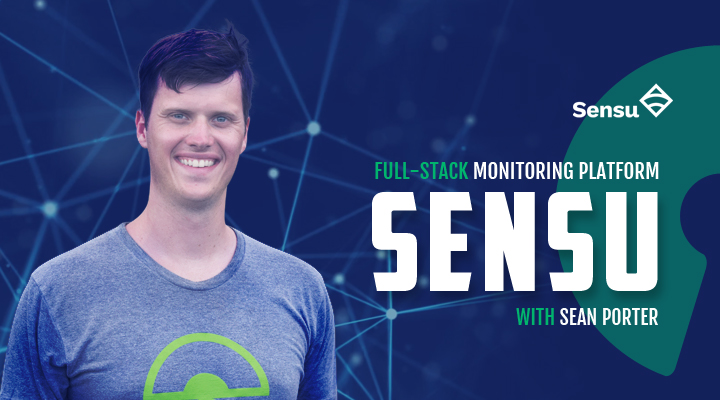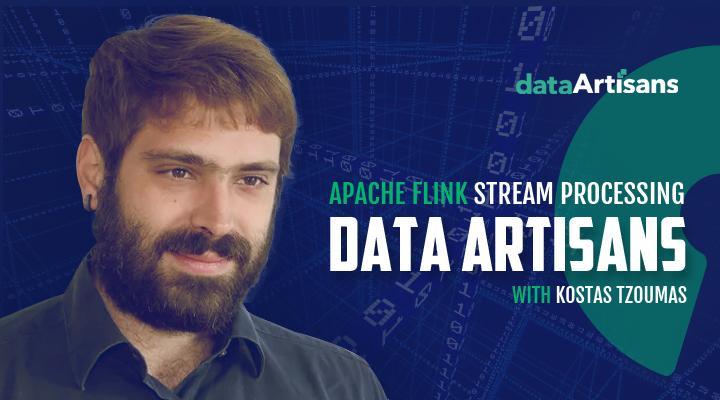Episode 20: Redis Labs – Database for the Instant Experience with Ofer Bengal
Ofer Bengal is the Co-founder and CEO of Redis Labs, home of Redis, one the world’s fastest instant experience databases. In this episode, Ofer discusses the evolution of open source software in the cloud-hosted market.
To note: This interview took place a few weeks prior to Redis Labs’ announcement of an updated license for modules created by the company. You can read more about the Redis Source Available License (RSAL). Open source Redis continues to be licensed under BSD.
Transcript
Intro
Michael Schwartz: Welcome back to Open Source Underdogs, the podcast where we cash the collective knowledge of founders, who use open source software as part of their business model.
No company has been more central to the discussion of open source business models than Redis. Just google Redis and Amazon, and you’ll get back pages of results.
When I was in Tel Aviv, it was a great honor to interview Ofer Bengal, CEO of Redis, in their awesome new office.
So, without further ado, let’s cut to the tape.
Thanks so much for joining us today.
Ofer Bengal: Thanks for having me.
Michael Schwartz: I’ve started four companies, which is more than anyone I know, but I think you’ve got me beat. How many companies have you started? And how did you come to get involved with Redis Labs?
Ofer Bengal: My story is a bit unusual because of my background, I’m an Aerospace Engineer. I got to the high-tech business by some sort of coincidence.
For years, I was designing airplane modifications and installations on war airplanes like F-16, F-15, etc. I did it for the Israeli Air Force, and then, I started my own sort of consulting company in the same area, doing work for American companies, Israeli companies, got bored with it, and started to invent toys. Sold some toy concepts to American companies like Coleco, the Time – I don’t know if you remember that company – the Cabbage Patch Kids, Hasbro, etc.
Then I wanted to start my own toy company, which would not just invent toys but also manufacture them. It was 1980 some, I prepared a very nice business plan to raise money for a toy company, can you believe it, so, no one wanted to invest in that company, except for one person that was from the high-tech business in Israel.
They were two brothers, who were the fathers of the pioneers of the high-tech business in Israel, their name is Zisapel. The guy told me, “give me the stuff to show my kids, if the kids like it, I’ll invest.” That’s the due diligence. He came back after the weekend, “the kids liked it, and I’m going to invest.”
A few days later, he said, “You know, I even have a better idea – why don’t we start a data communications company together? I’ll put the money and you will manage the company.” I said, “why are you even suggesting that because my mind is in toys now?” He said, “you look to me like an entrepreneur, pushy, etc, so I would like to bet on you.”
I said, “no, thank you, I’d like to carry on with toys.” But later on, once I couldn’t find more investors, I gave up, and I started a data communications company. That was back in 1991, or so.
And from then on, that company I took public at NASDAQ in ’97, and then later on, I started another company, which I sold, and then another company, so it became back door to the high-tech business.
Michael Schwartz: So, how many companies is that?
Ofer Bengal: Basically, in terms of starting companies, I started four companies in my career, and then managed another two on request of venture capital firms. One for Sequoia, one for Star Ventures. And these companies were a bit in distress, and I was called to try to save them.
Origin
Michael Schwartz: In 2015, Redis Labs hired Salvatore Sanfilippo, the original author of Redis, but before that, you were using the Redis name, you’d raised quite a bit of capital from Silicon Valley – did you learn anything from that process? And looking back, would you have done anything differently?
Ofer Bengal: Not really. Like many other companies, where you start is not where you end.
When we started in 2011, the database market was dominated by very large companies, like Oracle, and it didn’t make much sense to start a database company at that time.
We, me and my partner, who started the company, came from the application acceleration space, and we thought that we always knew that whatever you do in the front end of the application, the database is always the bottleneck. We thought that we should do something around it, and we started with cashing systems for accelerating databases.
At the same time, when we just started, we found a relatively new open source by the name of Redis, which was started by an Italian guy, Salvatore Sanfilippo. And we thought, hey, this is cool – let’s take it as the engine under the hood for what we were doing at that time. And so we did.
But after a year, we saw that this open source is becoming extremely popular, and we said, “maybe, we’re in the wrong business, and maybe we should turn the company and make it a Redis company.” So, we did that.
A couple of years later, Salvatore joined the company, and he is now leading all the activities around continued development of the open source.
Now, a word about Salvatore. This guy started Redis, and the first version, I believe, was out in ‘09. He did it initially as a part of the project he was doing for Telecom Italia. He was looking for a very fast database, he couldn’t find one, so he decided to develop one by himself. He didn’t have great expectations from that and just put it out as an open source.
That was ’09. Around 2011, Redis started to pick up and became extremely, extremely popular. Today, it’s one of the most popular databases in the world, and definitely one of the most popular open source projects in the world. So, that’s a little bit of history of Redis.
Customer Segments
Michael Schwartz: Most of our listeners probably know that Redis is used by a myriad of organizations, and Redis Lab has thousands of customers. But, when your potential market is so broad, how do you segment the customers?
Ofer Bengal: Redis is very horizontal in nature, so it covers many, many use cases for modern applications, and that’s why you find Redis today in almost any enterprise in the world, not to mention startup companies, developers, etc, etc.
We basically sell to all industry verticals, so just to give you some names.
In banking we sell to American Express, Wells Fargo, Credit Agricole.
Financial Services: MasterCard, Visa, Intuit, Fiserv.
eCommerce: Walmart, eBay, Starbucks. Social: Twitter, Twitch. Media: MSN, DreamWorks. Advertising: Havas, Rev Mobile, Outbrain. In technology: Apple, Cisco, Dell.
In communication, Comcast, AT&T, Verizon, Vodafone. And so on and so forth, in other industry verticals.
Michael Schwartz: I guess, my question was, because you can sell to anybody, do you break up the customers into different types and segment them in any way, when you look at them from a marketing perspective?
Ofer Bengal: We look at few dimensions.
First of all, we look at what are the capabilities of the database.
We map that into use cases of modern application. And then we map that into industries. We have all these matrices of mapping, and we have white papers and explanations for each of those. The idea is that, today, the world of databases has changed a lot from like 10 years before.
Originally, you had one database type that fits all. So, if, I don’t know, Citibank decided to use Oracle, they’ll adopt Oracle for everything. This has changed a lot because today it became more silo business.
Certain databases are good for certain type of use cases, and these use cases are very typical for certain industries. So, today, you find in a single Enterprise multiple databases not just that, with the single application, even a simple iPhone application, you can find five, six, seven different databases serving it.
Everything is changed, and that’s very good for us, because the market is a way more diverse now, and there is room for new entrance, and so on and so forth.
Value Prop
Michael Schwartz: What’s the value proposition of the Redis Labs’ commercial offering?
Ofer Bengal: What we did with Redis Enterprise is, we took it to the next level in terms of being suitable for Enterprise use.
There is a difference between an open source project, which can be very powerful but misses several elements, which every Enterprise requires.
In terms of scalability, we offer infinite scalability, various degrees of high availability with instant auto failover, better performance, more stable performance, and tons of other things, which make the product more robust and suitable for Enterprise use.
Revenue Streams
Michael Schwartz: What are the revenue streams for Redis Labs?
Ofer Bengal: Monetizing open source has always been a challenge, as you may know.
It all started with Red Hat providing support for the software. We never thought of this as a good business model, so from day one, we decided that we do not want to provide support to the open source. Until this very day, we do not.
Basically, the idea was, “let’s add value to the commercial software and sell it.” And that of course comes with support.
Today, we offer it in various delivery models. The first one is what we call database-as-a-service.
Database-as-a-service means that it’s a fully managed service, fully automated service, whereby the customer signs up in a zero-touch manner, and everything is done automatically by the system without human intervention.
He signs up, they create a subscription, and then they start to use the database with their application, without us being involved in the process. And they pay starting with on-demand, which means, as much space they consume in terms of gigabytes, terabytes, petabytes, etc.
And then we try to convert the large customers, the large on demand customers to annual subscription, where they commit for a year. That’s one part of the business. And then, the other part is the more conventional software selling part, whereby we sell annual subscription to our software.
Again, we quantify by what we call shards. Shard is a process of a database that has certain capabilities in terms of throughputs and amount of data that you can process, etc. But, anyway, all-in-all, we quantify what we sell according to the size of the database in general, and then you can get it, either as a fully managed service, or as a software that you install by yourself and operate by yourself.
Breakdown Of Revenues
Michael Schwartz: Can you share with us any percentages of like what percentage is database-as-a-service or versus software?
Ofer Bengal: When the company started, we only offered database-as-a-service, we didn’t have fans at the beginning to create, build a large field operation. So, we decided to go for the zero-touch model, which is not very costly. We started there.
A few years back, that accounted for like 80% of ourselves. Today, it’s changed. There we have a significant sales force. Today, we have around 60 to 65% of our business is driven by field operations, direct sales, and only the rest is database-as-a-service.
R&D: Open Source V. Commercial
Michael Schwartz: With regard to R&D, how do you prioritize how much you should invest in the open source core part of Redis, and how much to invest in the commercial offering?
Ofer Bengal: With the open source, there is Salvatore, with a group of developers. He still leads the development of the open source. And then, we have a way larger team, working on what we call Redis Enterprise, which is our commercial offering.
The way to decide what to put here and what to put there is kind of very sensitive. Basically, our decision was that this fine line is drawn, so whatever it has to do with new functionalities, in terms of commands, data types of the database – that will go to the open source.
When it has to do with the deployment of the database in a large-scale, and all the ongoing operations of the database – that will go to Redis Enterprise. I think it works well for us because the database is continuing to be very popular, whereas we are doing good with selling the commercial offering.
Licensing
Michael Schwartz: Redis is the poster child for what some call open source strip mining. Amazon, Google, Microsoft offer hosted Redis platform, and despite huge revenue, they haven’t contributed a fair amount to fund innovation of the platform.
If I understand the situation correctly, Redis changed some previously BSD-licensed software to a non open source approved license to prevent this opportunistic behavior.
My first question is, why not just change to the AGPL?
Ofer Bengal: Although AGPL provides a little better protection than BSD, because you need to contribute back basically any enhancement that you do to the software, we didn’t feel that this is a showstopper for a cloud providers to adopt a successful open source projects, and I’ll explain.
What happened in recent years is, as the cloud business grew, cloud providers such as AWS are adopting any successful open source project, making it a fully managed service and selling it for tens of millions, in the case of Redis, hundreds of millions of dollars per year.
Now, they did not contribute anything to the development of those open source projects, so it becomes some sort of unfair competition because they use their monopoly power, and the fact that people come to those clouds for the infrastructure, and eventually, they see all those data services that AWS offer.
To me, it’s exactly the same situation as the antitrust thing that we had in the past with Windows and Explorer, if you recall that. Microsoft was basically giving you Explorer for free, and by this, trying to capture the browser business. And there’s nothing we can do about that at the moment.
What we thought was that we didn’t want to change the license of open source Redis all together. First of all, you can’t change history, and secondly, we didn’t think it’s good, in terms of adoption perspective, etc.
So, what we decided to do was to leave the core of the open source BSD as it was. But certain new enhancements that we are adding over time, will be under a different type of license, which is still source available.
So anyone can take the source code, change it, do whatever they want with it, except one thing – they cannot sell it as a product. Because we think it’s not fair.
So, this is what we’ve done, the initial concept was called Commons Clause, it was done together with a few other companies. We are now looking at ways to make it even better for various reasons. I will not get into that today, but the concept is the same.
We think that we need to protect our rights as developers of certain software products, and avoid cloud providers for just taking that, without investing anything and monetizing it big time.
Community Reaction To License Change
Michael Schwartz: Redis Labs has Enterprise software that they release, there’s this Enterprise platform, and there’s Redis Core – do you think that the open source community is overreacting here? Isn’t this a common practice?
Ofer Bengal: With all due respect to the open source institute, I think that they are a bit detached from today’s reality, and for them, open source is like a religion.
I think that the environment has changed a lot since the ‘70s, or ‘80s, when open source started, with the emergence of cloud providers and what they do with open source.
I think that the market has its own dynamics, and that’s why you see all these different initiatives, not just by us, but other companies have started similar initiatives of trying to bypass the open source with something which is a little bit better.
AGPL-MongoDB
Michael Schwartz: In fact, MongoDB, who’s had AGPL in the first place, for some reason, felt that AGPL wasn’t providing enough protection.
Ofer Bengal: As I said before, we always thought that AGPL does not provide protection, because the proof of that, by the way, is that recently AWS announced what they call DocumentDB, which is basically MongoDB product. I guess they took some of what Mongo had under AGPL in the past, before they changed to SPPL.
And, practically, if you read the AGPL license, it does not prevent companies like AWS from taking the product and selling it.
Progress In Harmonization
Michael Schwartz: In the previous Open Source Underdogs podcast, Mark Shuttleworth, Founder of Ubuntu and Canonical, implied that both sides need to work together, that it’s normal for this type of evolution of license and business relationships to evolve.
But do you see any progress that this may actually be happening?
Ofer Bengal: Well, I hope so.
To be honest, I have a company to run, and we need to grow the business, so this is not our main goal in life. We will be happy to participate in any such effort obviously. I’m not sure that we have any interest to lead, any efforts like this, because we have other things in mind, but I definitely think that this is required.
How To Compete With Amazon
Michael Schwartz: Redis Labs has its own cloud-hosted database-as-a-service, and although Redis Labs is pretty sizable, no one has economies of scale like Amazon, Google, and Microsoft. How do you compete in that hosted market?
Ofer Bengal: The only way to compete is with technology, and what we are doing now is taking Redis to the next level.
Redis started as a cashing system. Later on, it became a data structure engine, and later on became a database.
What we’re doing now is taking it to the next level, which means, making Redis what is called a multi-model database, whereby you can model the data in many different ways, starting with key value, data structures, graph, time series, streaming data, search functionalities, AI functionalities, and some more.
The idea is that with that, which is, by the way, the new trend in the database technology, we will be able to cover many more use cases, and by that, capture a larger market share, so that’s our strategy.
All these new enhancements are licensed differently, with this new different license, which prevents the likes of AWS to adopt it.
So, that’s our strategy in terms of competing with these companies, because, obviously, in terms of visibility, etc, you can’t compare.
Sales and Marketing
Michael Schwartz: You mentioned previously that you have built up the sales force overtime. Can you talk a little bit about sales and marketing? I would imagine you originally started with a lot of inbound, but how have sales and marketing sort of evolved since you got started?
Ofer Bengal: As I said, in the first years, everything was inbound.
We started zero-touch, which means, we drive people to our website, where they can sign up, create subscriptions, etc. Those were the first years.
After we completed building the software product, this is very hard to sell online, just by putting it on the website, so we started to build field operations – that was around 2015.
Today, it’s pretty sizable organization, we have people on the ground in all parts of the US. We have a team in India, we have teams across Europe, we have a team in Israel. And when I say a team, they comprise sales rep, they comprise solution architect, so any sale is very technical in our case.
It’s not just a sales person knocking on the door and saying, “hey, I’d like to sell you a refrigerator or something.” You need to work with the tech people of the customer, analyzing their environment, their architecture, etc, and finding the best fit. So, this is done by our solution architects, and they work in teams with the reps.
Then, we have all the marketing organization, which basically drives demand, so they work with all advertising, with a CEO, we do tons of events. This year, we’re going to do 90 different events across the world – all of that drives demand, in terms of leads.
Then, we nurture the leads to become what we call MQLs, Marketing Qualified Leads. And then we have a team of what we call SDR, Sales Development Reps, which basically pick up the phone, call these MQLs, and try to see if there is substance there, if there is a project going on that we can tie in, etc. If so, they convert them to become what we call QSLs, Qualified Sales Lead, and those are handed over to the salespeople, to start doing the actual sales work. That’s the way we work.
We also rely heavily on partnerships, we have a few very strong partners, and those partnerships are very intimate. We really go to market together, both on the marketing side, and also sales teams work together. We work like this with Pivotal, with Red Hat, now with Microsoft, and some others. So, that’s very powerful for us.
Partnerships
Michael Schwartz: Can you just maybe elaborate a little bit more on the partnerships? You have sort of technology partners, like you mentioned Pivotal, Microsoft, etc. What about integration partners, or other types of partners – how do you work with those?
Ofer Bengal: We work with some of the large system integrators in the world.
I can’t say that so far we found the sweet spot of how to do that, in terms of, it seems that when you get to the larger and larger companies, and as I mentioned before, we sold and worked with the largest companies in the world. We have approximately 40% of Fortune 100 companies as customers, you need really to be in direct contact with their technical teams.
So, it’s very hard to do it second-hand, that you educate someone, and they do it. So far, we weren’t too successful with that, although we very much like to leverage that, obviously because that gives you much larger coverage, but so far, our successes in partnerships were more with IT companies, who basically try to sell the entire IT suite to those large Enterprises, companies like Pivotal, Red Hat, etc.
Challenges of Being an Israeli Company
Michael Schwartz: Has being an Israeli company presented any special challenges?
Ofer Bengal: The major challenge is me spending half of my life on planes, that’s the thing. Because I split my time between the Mountain View, where we have our headquarters, and Tel Aviv, which is R&D Center.
The flight time direct between Tel Aviv and SFO is 13 and a half hours, direct. And if it’s not direct, it can easily take like 20 hours or so. Anyway, I spend a lot of my time on planes and fighting jet lag fiercely, but that’s what I have to do.
Michael Schwartz: So, you get time to listen to podcasts.
Ofer Bengal: Exactly.
Redis In 20 Years?
Michael Schwartz: Where do you see Redis Labs in 20 years?
Ofer Bengal: I think that we have a very unique opportunity, which, in my eyes, and I’ve been around, is a once-in-a-lifetime opportunity.
We have a very rare combination of a huge market, which is being disrupted, and open source, which is extremely popular, strong value proposition, with the commercial product on top of the open source. And then, apart from that, Redis is the fastest database in the world. I don’t know if I mentioned that before.
I don’t know if you remember the first time you did a Google search, to me, it was like magic: You clicked and you got it immediately. Now, today, this type of performance is expected from any modern application, especially with Millennials, Generation Z, etc, they don’t have the patience to wait, they would like to click and get it.
Now, when you look at what happens under the hood, when you click, a request goes over the internet to a remote server, a database is involved, it has to get back to you, etc. If all that happens in more than 100 ms, which is 0.1 second, you start to feel uneasy, as if something is not operating properly.
Now, the database was always the bottleneck when it comes to end-to-end application performance. And Redis is the only database that can process tens of millions of transactions per second, and all that, it’s sub-ms latency.
And with that, we see ourselves today as the enablers for modern applications to provide what we call instant experience. By the way, this was always the selling point for Redis, and I’ll claim to fame, and we push very hard on it.
Today, we offer graph functionality, much faster than any other graph database, we offer document functionality way, way faster than any document database, time series, the same, streaming, we do so much faster than Kafka, etc.
So, whatever we do, we do way faster than anyone else, and this is basically our main setting point. So, today, people in the industry know that whenever you need something fast, there is only one solution, and that is Redis.
Going back to your initial question about where do I see Redis Labs in 20 years, I’ll start from the beginning.
I think that we have a very unique opportunity, which in my eyes, and I’ve been around, is a once-in-a-lifetime opportunity, and this is because we have the very rare combination of a very large market.
The database market is going to be $60 billion market this year, which is being disrupted for the first time in its history with the entrance of new type of databases, which some people call NoSQL, etc, and many other changes in this market.
Secondly, we are based on a very, very popular open source project, which is available and being used in almost any organization in the world. That’s very unique.
On top of that, we have a commercial product, which is robust and stable now, which provides many value adds to large Enterprises on top of the open source.
Add to that the growing demand for instant experience, today, people would like everything to be instant, we provide that capability.
And add to that the fact that Redis runs originally on RAM. RAM is relatively more expensive than other media such as SSD, or obviously disk. So, in the early days, it was like a little bit of a hindering factor for wider adoption of Redis because of the costs associated with the underlined resources. But, today, there is another trend, which works for us, and this is the trend of new memory technologies, persistent memory technologies by companies like Intel, Samsung, etc.
If you compile all this together, it seems that we are on the verge of a huge opportunity, and
it’s basically for us to do it, or not to do it. And this is what I always tell the people in the company, “guys, it’s in your hands.
If we don’t make it a very big multibillion-dollar company, this means we did something wrong.” That’s it.
Advice For Startups
Michael Schwartz: The goal of this podcast is to help entrepreneurs who are starting businesses around open source. Do you have any advice for entrepreneurs who are just getting started about how to use open source software as part of the business model?
Ofer Bengal: Do not neglect the business model. Think about your business model from day one. Because when it comes to open source, that’s the most challenging issue. You know, you can build a great product, great technology, which everyone likes, you want to make a penny out of it, so think what is your strategy, in terms of what do I sell, how does this compare with what’s available in the open source for free, and basically how do I make money.
Credits
Michael Schwartz: Ofer, thank you so much for sharing your wisdom.
Ofer Bengal: You’re welcome.
Michael Schwartz: Transcription and episode audio can be found on opensourceunderdogs.com.
Music from Broke For Free and Chris Zabriskie. Our audio editor is Ines Cetenji.
Production assistance and transcription by Natalie Lowe. Operational support from William Lowe.
Follow us on Twitter, our handle is @fosspodcast.
Tune in next week for interview with Ravi Mayuram, CTO of Couchbase.
Until then, thanks for listening.

